Mauna Kea, a dormant volcano in Hawaii, rises majestically above the sea, offering an unparalleled view of the heavens. Its high elevation and clear skies make it a prime spot for stargazing, attracting astronomy enthusiasts like you.
However, Mauna Kea’s unique geography and cultural significance pose challenges. The range of climates from tropical to arctic and its sacred status for Native Hawaiians require careful consideration and respect. Many visitors, eager to explore its astronomical wonders, may overlook these important aspects.
In this article, I’ll guide you through planning a respectful and enriching visit to Mauna Kea. You’ll discover how to embrace both its astronomical marvels and cultural heritage, ensuring a memorable and responsible Mauna Kea stargazing adventure. Join me as we explore the skies and delve into the heart of Hawaii’s most revered peak.
Key Things to Know:
- Mauna Kea’s high elevation offers exceptional stargazing opportunities.
- Respect the site’s cultural significance to Native Hawaiians.
- Plan for varied climates, from tropical to arctic conditions.
- Visit the Mauna Kea Observatories for a more profound astronomical experience.
Recommended For You
Understanding Mauna Kea
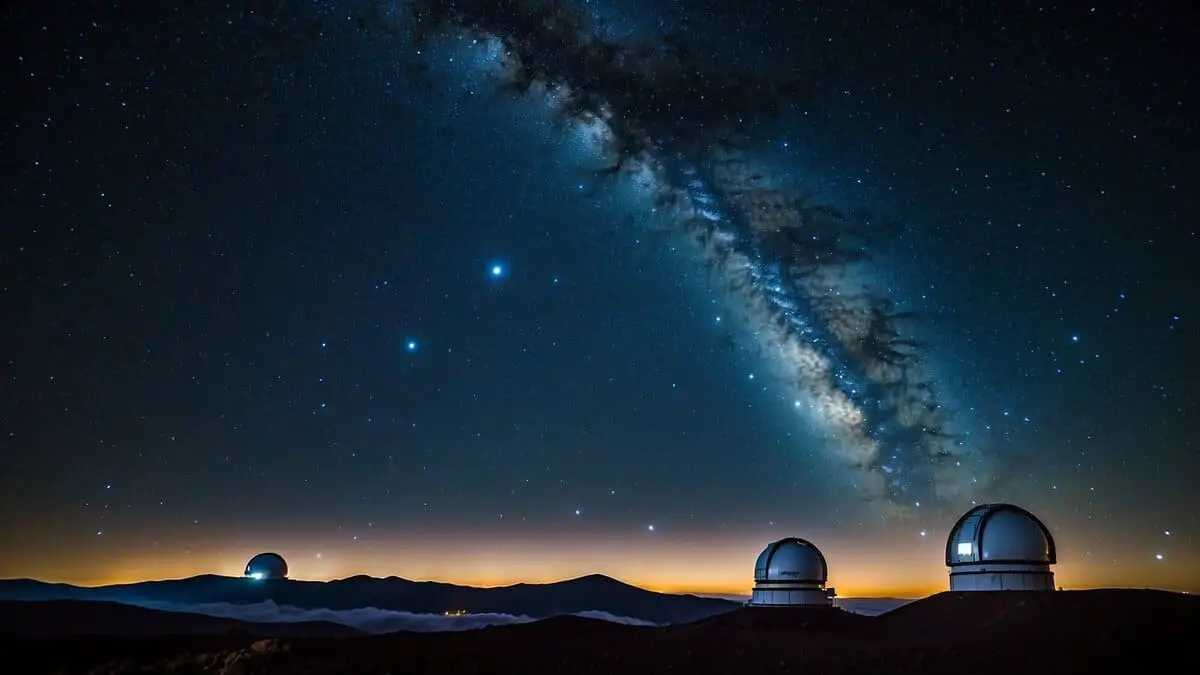
Geographical Significance
Mauna Kea, which I have visited several times, is a dormant volcano in Hawaii, standing tall at over 13,800 feet (4,207 meters). It is the highest peak in the state and is known to have the most accessible high-elevation summits. This great height allows for a clearer sky view, which is perfect for astronomical observations. Due to its unique geography, Mauna Kea experiences many climates, from tropical to arctic conditions at the summit.
Cultural Importance
Mauna Kea holds immense cultural significance for Native Hawaiians.
It is believed to be:
- Home to the gods and goddesses
- A significant place for ancestral burial sites
- The location of ceremonial platforms
- Containing an alpine lake with healing powers
Because of its importance to Native Hawaiians, Mauna Kea is a sacred space you should respect during your visit.
Astronomical Facilities
The Mauna Kea Observatories are managed by the University of Hawaii and are home to 13 independent telescope facilities. Since the peak offers perfect conditions for astronomical observations, many prominent research organizations have established facilities on Mauna Kea.
Some notable features and research goals of these observatories include:
- Probing the Universe’s most distant galaxies
- Studying the formation of stars and planets
- Monitoring the Sun and other solar objects
Mauna Kea is an essential astronomical research site for various scientific institutions worldwide. When visiting, please keep the cultural importance of Mauna Kea in mind and revel in the fascinating stargazing opportunities it offers.
Planning Your Visit
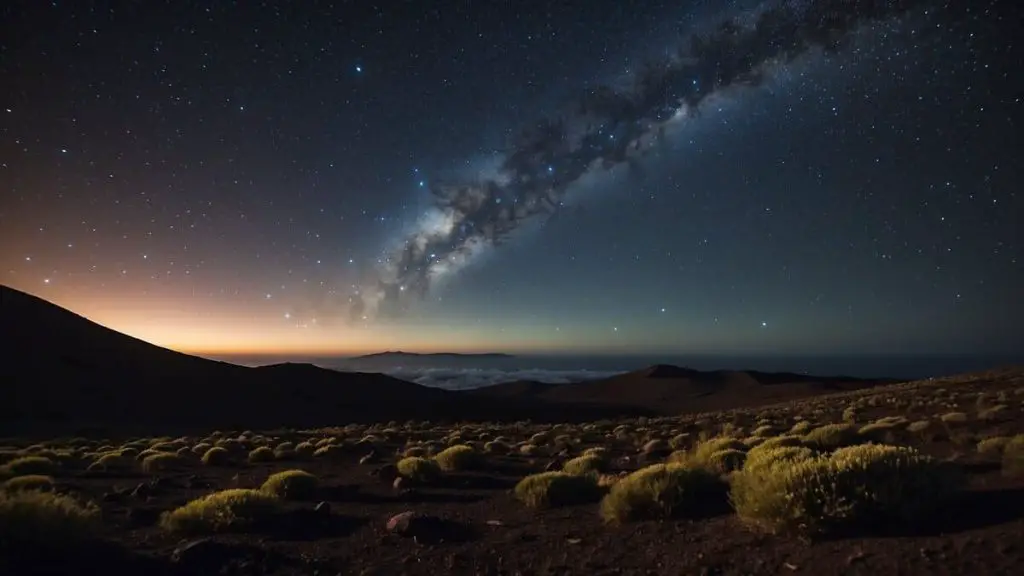
Best Time to Stargaze
From my experience, the best stargazing at Mauna Kea happens during new moon phases, when the sky is darkest and stars shine brightest. Typically, the skies are clear, and stars are easily seen after sunset. It’s a good idea to check the sunset time for the day of your visit, so plan your trip accordingly.
FREE STARGAZING CHECKLIST
My 5-page Stargazing Checklist will enhance your astronomical observations.
Follow this free checklist to navigate the night sky with confidence, clarity, and a sense of preparedness for a rewarding stargazing experience.

Visitor Information Station
The Mauna Kea Visitor Information Station (VIS) was crucial in making my stargazing experiences there successful. This station is open daily from 9 am to 9 pm. Here, you can obtain valuable information about the stargazing program and how to get the most out of your visit.
What to wear
As you’ll be at a high altitude, expect colder temperatures. It’s important to dress warmly and appropriately for the conditions.
Make sure to bring:
- A warm jacket
- Insulated parkas
- Gloves
Health and Safety Tips
Before embarking on my first stargazing adventure there, I understood the health and safety risks of visiting Mauna Kea.
- Altitude: Mauna Kea is over 9,200 feet above sea level, which makes it susceptible to altitude sickness. Symptoms may include dizziness, nausea, and shortness of breath. To minimize these risks, take time to acclimate to the altitude when you arrive.
- Cold Temperatures: As mentioned earlier, the temperature at Mauna Kea can get quite cold. Dress warmly and in layers to maintain your body heat.
- Health Conditions: If you have any pre-existing respiratory or heart conditions, consult your doctor before visiting Mauna Kea. The altitude and cold temperatures may exacerbate these conditions.
By following these tips, you can ensure that your Mauna Kea stargazing experience is enjoyable and safe.
Mauna Kea Stargazing Essentials
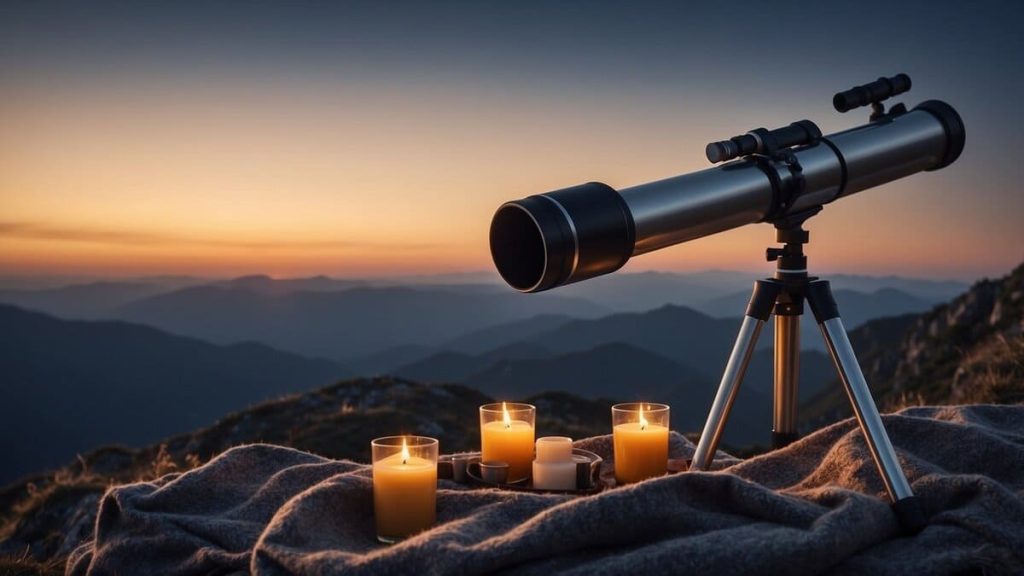
What to Bring
When I ventured out for my night of stargazing at Mauna Kea, being prepared with the right gear made all the difference.
Here’s a quick checklist of items you should bring along:
- A hat to keep your head warm
- A warm jacket or parka, as the temperature can drop quickly
- Snacks to keep you energized
- A blanket or seat cushion for comfortable stargazing
Dressing for the Occasion
On Mauna Kea, the wind can be pretty chilly at night, so dressing warmly is crucial.
Keep in mind the following tips when choosing your attire:
- Layer up: Start with a thin base layer, followed by a heavier shirt or sweater, and finally, a snug, wind-resistant jacket.
- Cover your head: A hat will help retain your body heat, keeping you warmer overall.
- Stay dry: Bring a waterproof jacket or poncho in case of any unexpected rainfall.
Photography Tips
Capturing stunning night sky photos can be a highlight of your Mauna Kea stargazing experience.
Consider the following tips to get the best shots:
- Use a tripod: This helps stabilize your camera, allowing you to take clear, crisp photos.
- Experiment with settings: Adjust your camera’s ISO, aperture, and shutter speed to capture the stars.
- Take advantage of free photos: Some stargazing tours include a professional astrophotographer who provides free photos of your experience.
By bringing the right gear, dressing appropriately, and employing photography tips, you’re all set for an unforgettable stargazing adventure at Mauna Kea.
Mauna Kea Tours and Activities
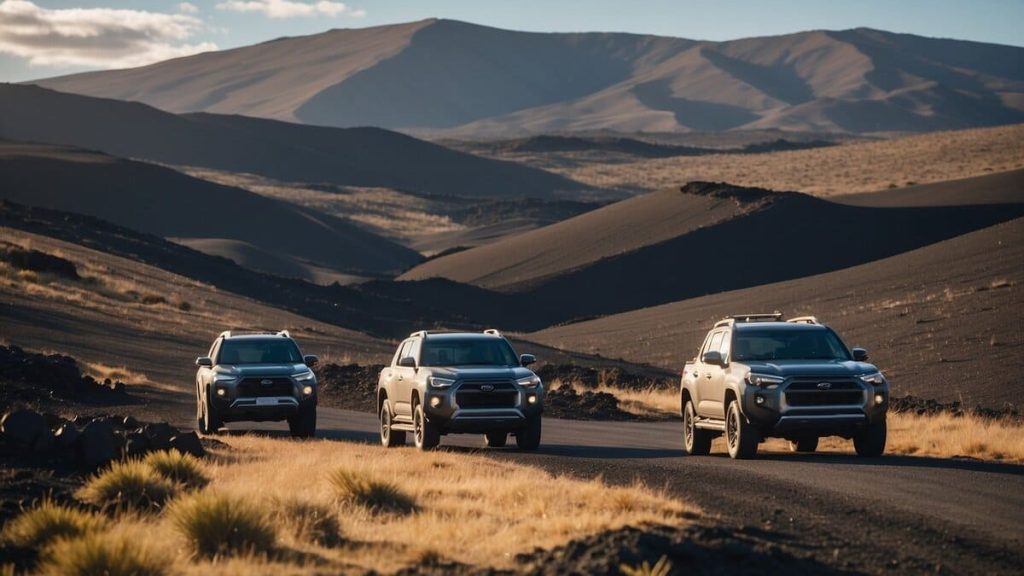
Guided Tours
If you want to explore Mauna Kea and its stargazing opportunities, joining a guided tour is one of the best options.
There are several different types of tour packages available, including:
- Summit Sunset Adventures: Watch the sunset from the summit of Mauna Kea and enjoy an unforgettable stargazing experience afterward. Some packages even include dinner.
- Stargazing-only Tours: If you’re more interested in stargazing than summit adventures, some tours focus on just that aspect, giving you a glimpse of the night sky from the best locations.
Whichever tour you choose, knowledgeable guides will assist you, providing fascinating information about the area’s geography, culture, and natural history.
Self-Guided Excursions
For the more independent explorers, there are also options for self-guided excursions.
If you decide to DIY your Mauna Kea stargazing experience, make sure to follow these steps:
- Plan your visit: Know when to go and account for weather conditions. Downhill hiking is not recommended for safety reasons.
- Visit the Onizuka Center for International Astronomy: This visitor center, located 9,200 feet above sea level, will provide helpful tips and information for your exploration.
- Acclimate to the altitude: Keep getting used to the high elevation before continuing upwards.
- Secure proper equipment: Wear appropriate clothing and footwear for the mountain terrain.
Safety is your priority, so always be prepared and follow posted guidelines.
Cultural Experiences
In addition to stargazing, Mauna Kea offers plenty of cultural experiences to enhance your visit.
You can:
- Learn about the rich history of the Hawaiian people and their connection to Mauna Kea.
- Participate in cultural events that take place around the mountain.
- Visit heiaus (ancient Hawaiian temples) and other significant sites.
Mauna Kea has a lot to offer in terms of both stargazing and cultural experiences, so take advantage of the opportunity to create unforgettable memories during your visit.
For more stargazing destinations in Hawaii, read my dedicated article about the best stargazing Hawaii has to offer.
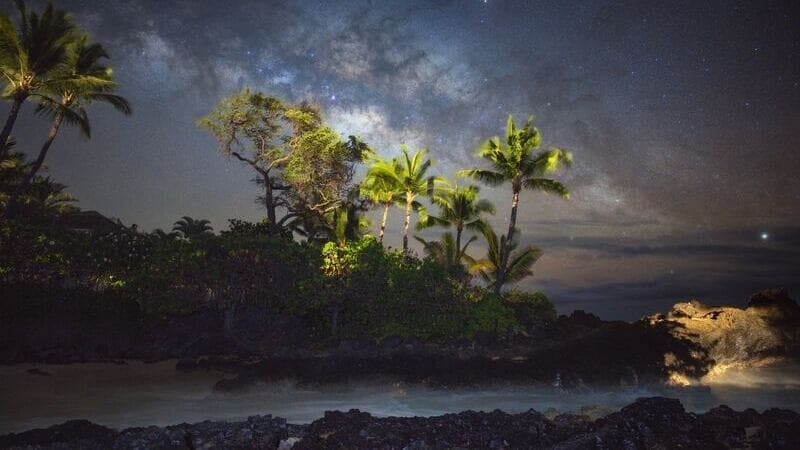
Astronomy Observations
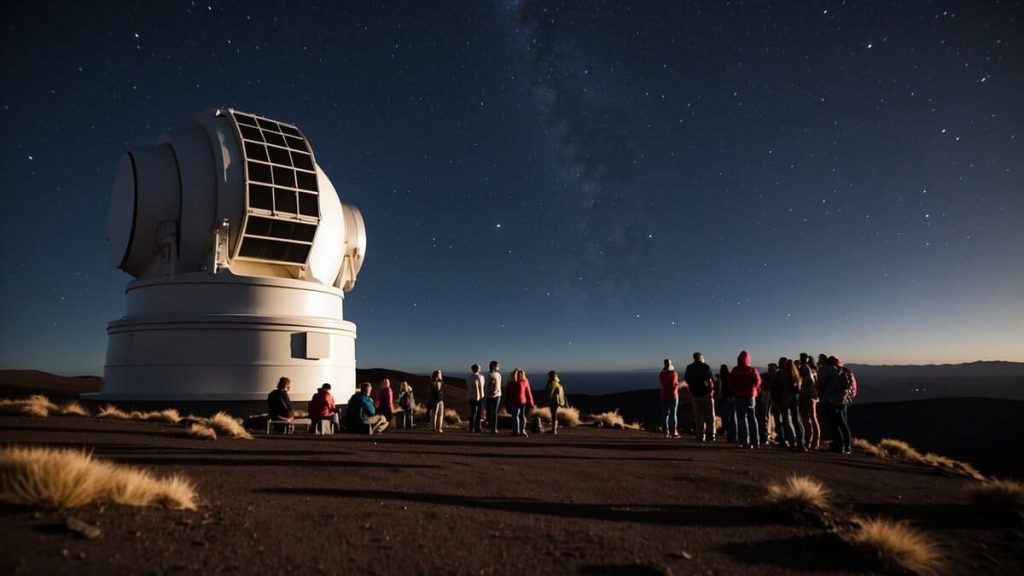
Using Telescopes
When visiting Mauna Kea for stargazing, you can use telescopes to observe celestial wonders.
By using telescopes, you can get a closer look at objects in the night sky, such as planets and stars. The Maunakea Visitor Information Station (VIS) offers a private viewing experience using their telescopes at 9,200 feet elevation.
Some tips for using telescopes effectively:
- Ensure the telescope is stable on its mount
- Adjust the focus carefully
- Observe objects with both high and low magnification settings
Understanding Celestial Phenomena
The Mauna Kea observatories help us learn about various celestial phenomena.
These phenomena include:
- Nebulae: Massive clouds of gas and dust in space where stars form
- Galaxies: Immense collections of stars, gas, and dust held together by gravity
- Milky Way: The galaxy that contains our solar system
By observing these celestial phenomena, you can learn about the vastness of the Universe and its endless beauty.
Identifying Constellations and Stars
Constellations are groupings of stars that form recognizable patterns in the night sky. While stargazing at Mauna Kea, you can identify various constellations and stars visible from Earth.
Here are a few well-known constellations to look out for:
- Orion – easily identifiable by the three “belt” stars
- Ursa Major – contains the “Big Dipper” asterism
- Cassiopeia – shaped like a zigzag or a “W”
Identifying constellations and stars during my visits enhanced my enjoyment and deepened my understanding of the night sky. Remember to take your time and let your eyes adjust to the darkness for the best viewing experience.
Logistics and Accessibility
Getting to Mauna Kea
To get to Mauna Kea, you can follow Saddle Road (Hwy 200), which leads to the Mauna Kea Access Road. Near mile marker 28, you’ll find the Mauna Kea access road entrance across the street from the Puʻu Huluhulu Cinder Cone parking lot.
You’ll need a 4WD vehicle to navigate the steep and rugged terrain safely. Some rental car agencies on the Big Island offer 4WD vehicles equipped for the journey to Mauna Kea.
Accommodation and Facilities
Stop by the Maunakea Visitor Information Station (VIS) at about 9,200 feet when visiting Mauna Kea. The VIS provides essential information about the area, stargazing programs, and a chance to acclimate to the high altitude.
For accommodation options, consider staying on the Big Island, as there are no lodging facilities on Mauna Kea itself. However, you can find hotels, resorts, and vacation rentals nearby, like Hilo, Kona, and Waimea.
Regulations and Permissions
When planning your Mauna Kea stargazing trip, take note of the following policies and rules:
- Reservations: To participate in the stargazing program, you must make advance reservations.
- Cancellation policy: Be aware of the cancellation policies of your tour provider or lodging so you can make changes if necessary.
- Rules and regulations: Respect the mountain by observing posted rules, regulations, and closures for specific areas. Mauna Kea is a sacred place for Native Hawaiians, so be mindful of cultural sensitivities and environmental conservation.
Planning ahead and following these guidelines ensures a safe and enjoyable stargazing experience at Mauna Kea on the Big Island of Hawaii.
Environmental and Cultural Preservation
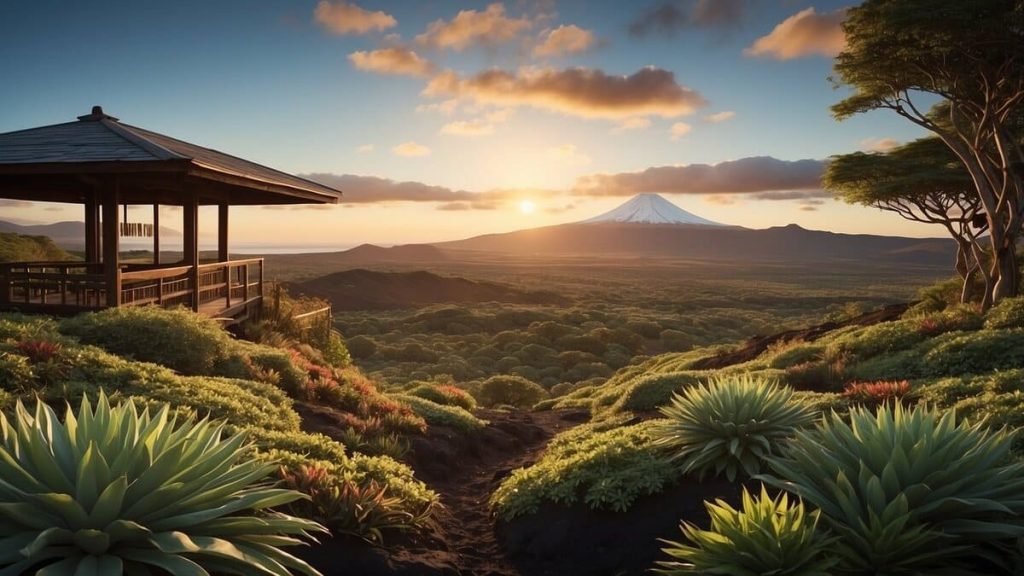
Conservation Efforts
Hawaii’s Mauna Kea is an excellent site for stargazing and a place of spiritual and cultural significance for Native Hawaiians. Several conservation efforts are being implemented to protect this sacred space and balance technological advancements like observatories while preserving the environment and native culture.
Protective measures include:
- Light pollution reduction: Using minimal lighting to avoid disturbing the natural environment and stargazing conditions
- Conservation policies: Implementing regulations to protect Mauna Kea’s native flora and fauna
- Native Hawaiian involvement: Gaining the input of Native Hawaiians in the preservation and future of Mauna Kea
Responsible Tourism
For tourists exploring Mauna Kea, it is crucial to participate in responsible tourism, ensuring that the environmental and cultural preservation efforts are supported:
- Choose eco-friendly tour operators: Look for operators who prioritize conservation by using low-light vehicles or educating visitors on cultural practices.
- Stay on designated trails: Avoid trampling on fragile vegetation and respect sacred sites.
- Leave no trace: Clean up after yourself and avoid littering or introducing non-native species to the area.
- Respect cultural practices: Observe spiritual rituals from a distance, ask questions politely, and gain a deeper understanding of the significance of Mauna Kea for Native Hawaiians.
By following these guidelines, you can contribute to preserving Mauna Kea’s unique environment and cultural heritage while enjoying its unparalleled stargazing opportunities.
Educational Resources and Programs

Astronomical Research and Data
At the summit of Mauna Kea, you’ll find several world-class telescopes managed by the University of Hawai’i. These telescopes play a crucial role in advancing our understanding of the Universe.
Here are some critical aspects of the Mauna Kea stargazing experience:
- The telescopes contribute to astronomical research, from studying distant galaxies to monitoring near-Earth objects.
- The Onizuka Center for International Astronomy Visitor Information Station provides access to educational resources about Mauna Kea’s history and ongoing research.
Public Outreach
The public can learn about astronomy and enjoy the beauty of the night sky through various programs offered by the University of Hawai’i and the Visitor Information Station. Some highlights of these programs include:
- Mauna Kea Stargazing Program at the Visitor Information Station (VIS).
- Special presentations and educational events led by knowledgeable staff members.
- Exclusive opportunities to view celestial objects through high-quality telescopes.
When you visit Mauna Kea, don’t miss the breathtaking sunset – it’s a once-in-a-lifetime experience! Remember, the Mauna Kea Stargazing Program’s offerings may vary, so it’s always best to check their website for the most up-to-date information.
Frequently Asked Questions
Can I access the Mauna Kea summit without a guided tour?
Yes, you can access the Mauna Kea summit without a guided tour, but it requires a 4WD vehicle due to the steep and rugged terrain. Ensure you’re prepared for the drive and respect all safety and environmental guidelines.
Are there specific cultural practices or rituals I should know when visiting Mauna Kea?
When visiting Mauna Kea, it’s essential to be aware of and respect Native Hawaiian cultural practices. This includes not disturbing rocks or archaeological sites and observing silence or quiet conversation in some sacred regions.
What are the best practices for astrophotography at Mauna Kea?
For the best astrophotography experience at Mauna Kea, use a tripod to stabilize your camera and experiment with settings like ISO and shutter speed. Also, be mindful of light pollution—use minimal lighting to preserve the natural stargazing conditions for yourself and others.
TL;DR
- Mauna Kea in Hawaii offers exceptional stargazing opportunities due to its high elevation and clear skies.
- The site is culturally significant to Native Hawaiians, requiring respectful visitation.
- The Mauna Kea Observatories feature 13 telescopes for astronomical research and observation.
- Visitors should prepare for varied climates and adhere to health and safety guidelines due to the high altitude.
- The Mauna Kea Visitor Information Station provides crucial support and information for a successful stargazing experience.
Your insights and questions are what make our stargazing community thrive. I’d love to hear from you if you have any queries or experiences about Mauna Kea or astronomy in general.
Let’s keep the conversation going in the comments below!




